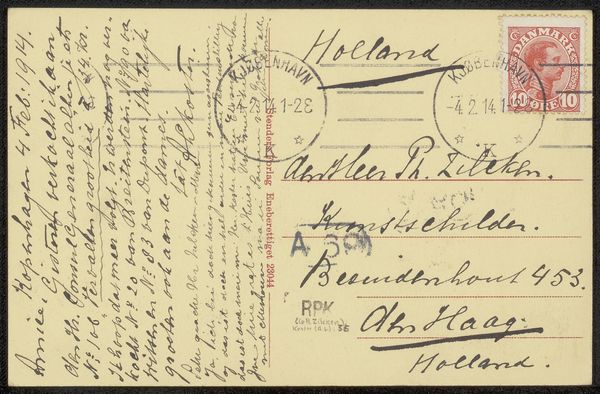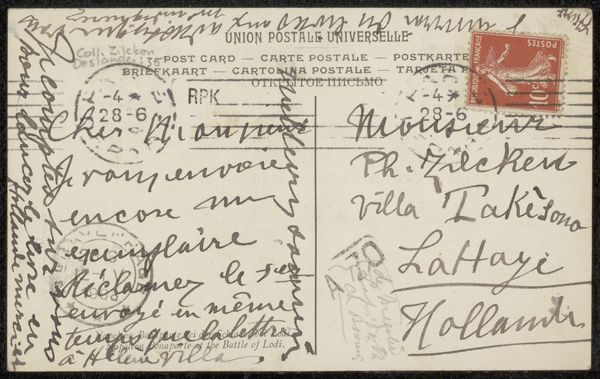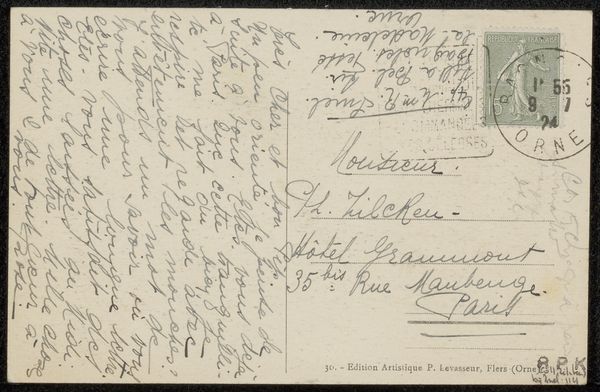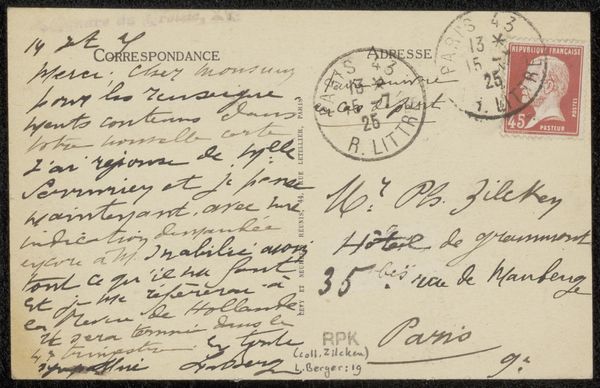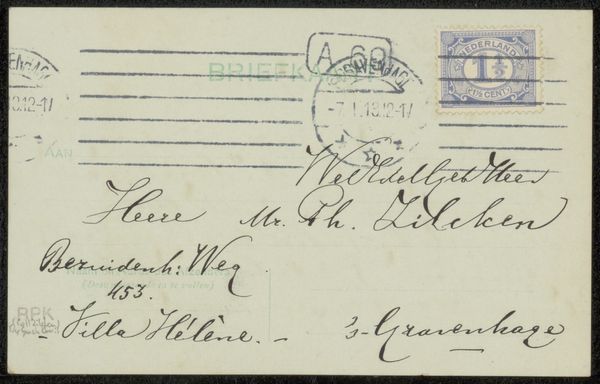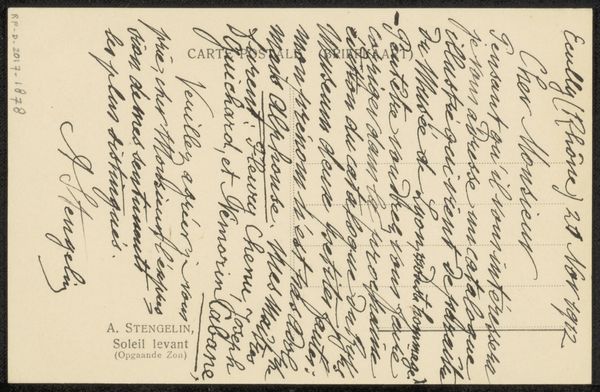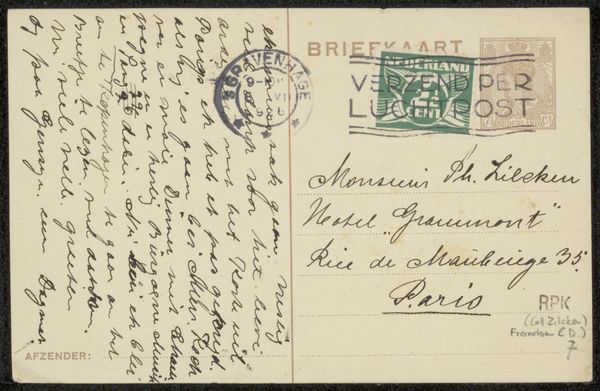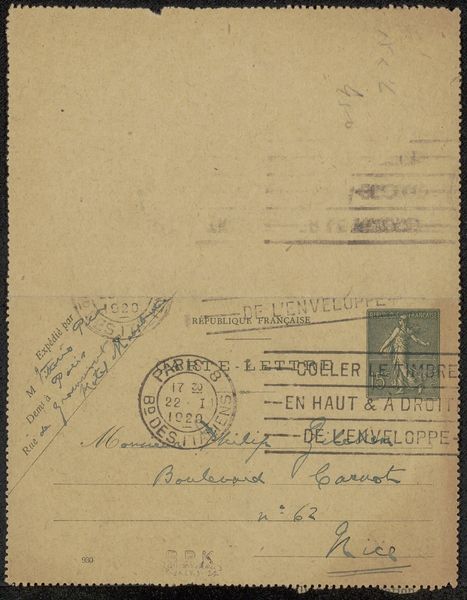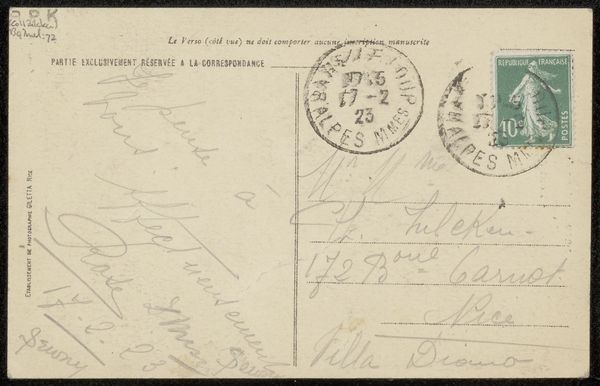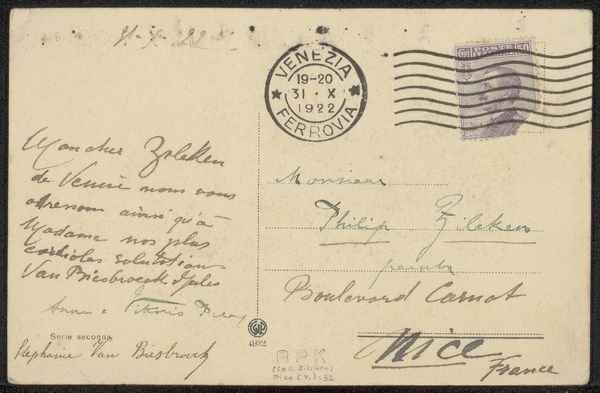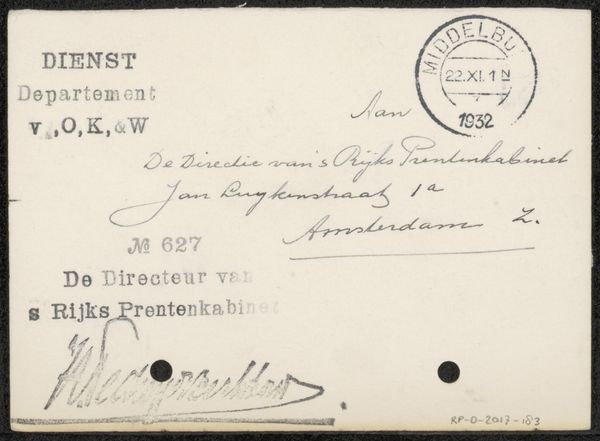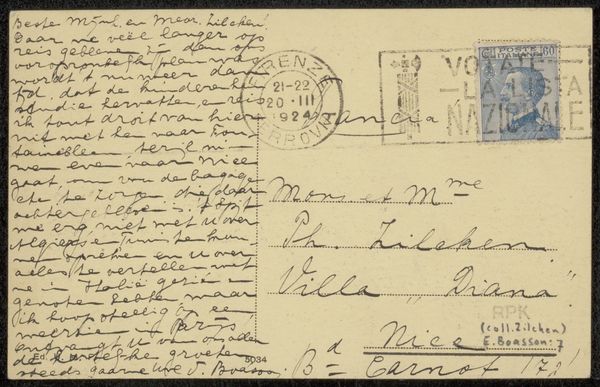
paper, ink, pen
#
comic strip sketch
#
hand-lettering
#
old engraving style
#
hand drawn type
#
paper
#
personal sketchbook
#
ink
#
ink colored
#
pen work
#
sketchbook drawing
#
pen
#
sketchbook art
#
marker colouring
#
calligraphy
Copyright: Rijks Museum: Open Domain
Curator: Here, we have a glimpse into the past through a "Prentbriefkaart aan Philip Zilcken," a postcard, created with pen and ink on paper sometime before 1924. It seems simple enough at first glance, but I immediately pick up on the weight of personal correspondence of that era, the tactile quality of handwriting. Editor: It is, undeniably, quite intimate, isn’t it? Seeing this makes me think of access, or the limitations thereof. Who had the privilege of sending such missives, and to whom? How might such forms of communication reinforce or challenge social boundaries in the period between the wars? It reminds me of how profoundly everyday modes of interaction shape cultural narratives. Curator: Absolutely. Postcards themselves represent a specific cultural phenomenon, especially given their use by the leisured class at that time. This card likely carries layers of meaning concerning travel and social standing, reflecting power dynamics of its time. Editor: And the text! While it looks almost nonchalant, it invites interrogation. "Cher amis..." What intimacy is performative and what reflects real bonds? Even the selection of the medium becomes significant, does it not? A quickly jotted postcard holds an entirely different register of social commitment than a formal letter. The immediacy seems performative in some respects. Curator: We also have to consider the institutional frameworks at play – how the postal service itself influenced interpersonal exchanges. Consider also that ‘Edition Tairraz, Nice’ at the bottom left may speak to how a growing tourist industry intersected with art and correspondence. Editor: What implications might that have for our understanding of this postcard? The act of reducing relationships into consumable, replicable greetings also raises essential questions concerning commodification. Looking closely at such seemingly insignificant objects becomes important to reveal a matrix of social influences, to subvert accepted historical narratives and to offer fresh, inclusive meanings. Curator: It's a delicate balance – finding the broader social resonance in such personal artifacts. This glimpse provides that bridge between personal stories and larger institutional and cultural shifts. Editor: Agreed. This postcard encapsulates how even simple personal gestures become potent sources to reveal larger societal tensions. I think what moves me most is how tangible a feeling comes through this small slice of life, from almost a century ago.
Comments
No comments
Be the first to comment and join the conversation on the ultimate creative platform.
